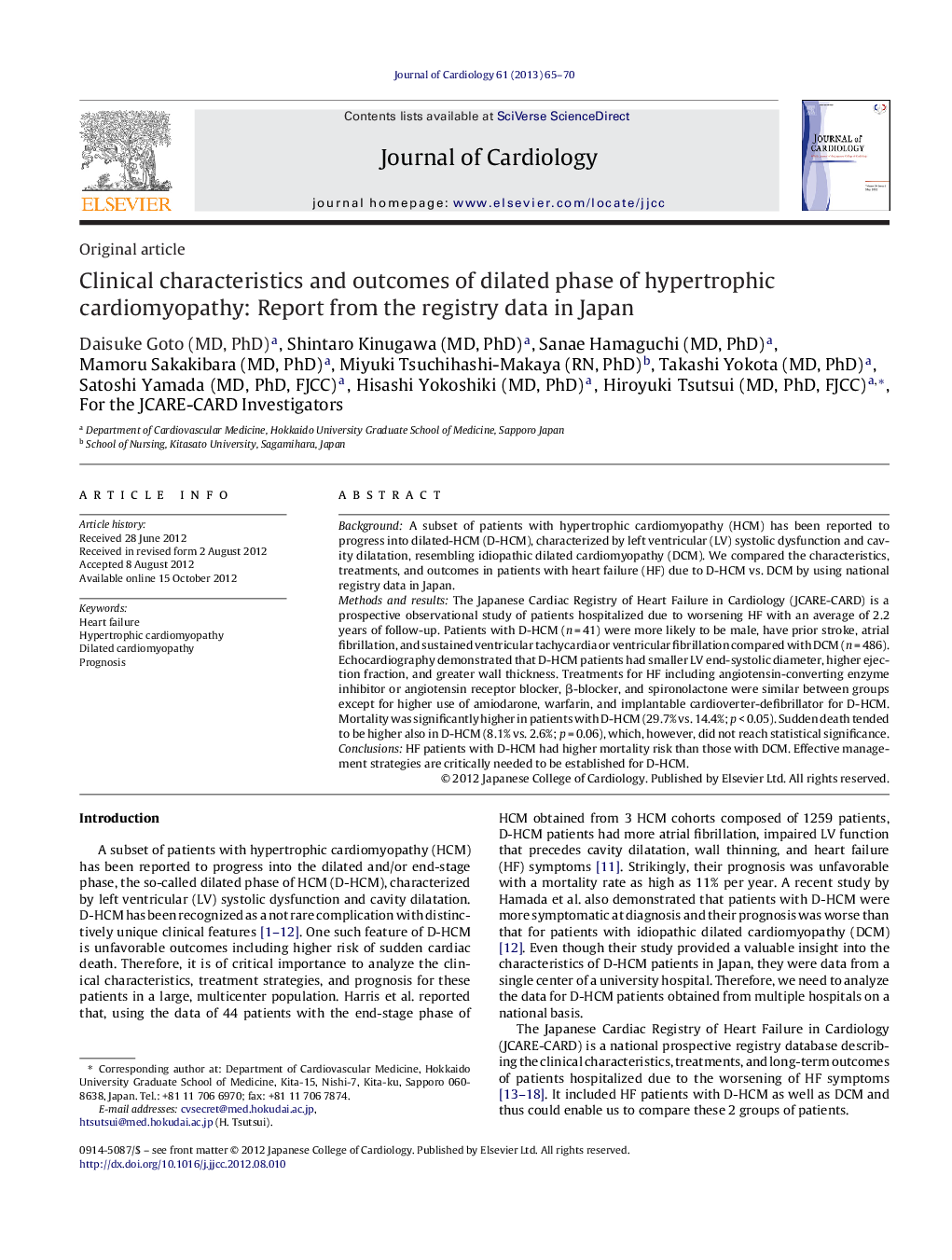| Article ID | Journal | Published Year | Pages | File Type |
|---|---|---|---|---|
| 2963221 | Journal of Cardiology | 2013 | 6 Pages |
BackgroundA subset of patients with hypertrophic cardiomyopathy (HCM) has been reported to progress into dilated-HCM (D-HCM), characterized by left ventricular (LV) systolic dysfunction and cavity dilatation, resembling idiopathic dilated cardiomyopathy (DCM). We compared the characteristics, treatments, and outcomes in patients with heart failure (HF) due to D-HCM vs. DCM by using national registry data in Japan.Methods and resultsThe Japanese Cardiac Registry of Heart Failure in Cardiology (JCARE-CARD) is a prospective observational study of patients hospitalized due to worsening HF with an average of 2.2 years of follow-up. Patients with D-HCM (n = 41) were more likely to be male, have prior stroke, atrial fibrillation, and sustained ventricular tachycardia or ventricular fibrillation compared with DCM (n = 486). Echocardiography demonstrated that D-HCM patients had smaller LV end-systolic diameter, higher ejection fraction, and greater wall thickness. Treatments for HF including angiotensin-converting enzyme inhibitor or angiotensin receptor blocker, β-blocker, and spironolactone were similar between groups except for higher use of amiodarone, warfarin, and implantable cardioverter-defibrillator for D-HCM. Mortality was significantly higher in patients with D-HCM (29.7% vs. 14.4%; p < 0.05). Sudden death tended to be higher also in D-HCM (8.1% vs. 2.6%; p = 0.06), which, however, did not reach statistical significance.ConclusionsHF patients with D-HCM had higher mortality risk than those with DCM. Effective management strategies are critically needed to be established for D-HCM.
